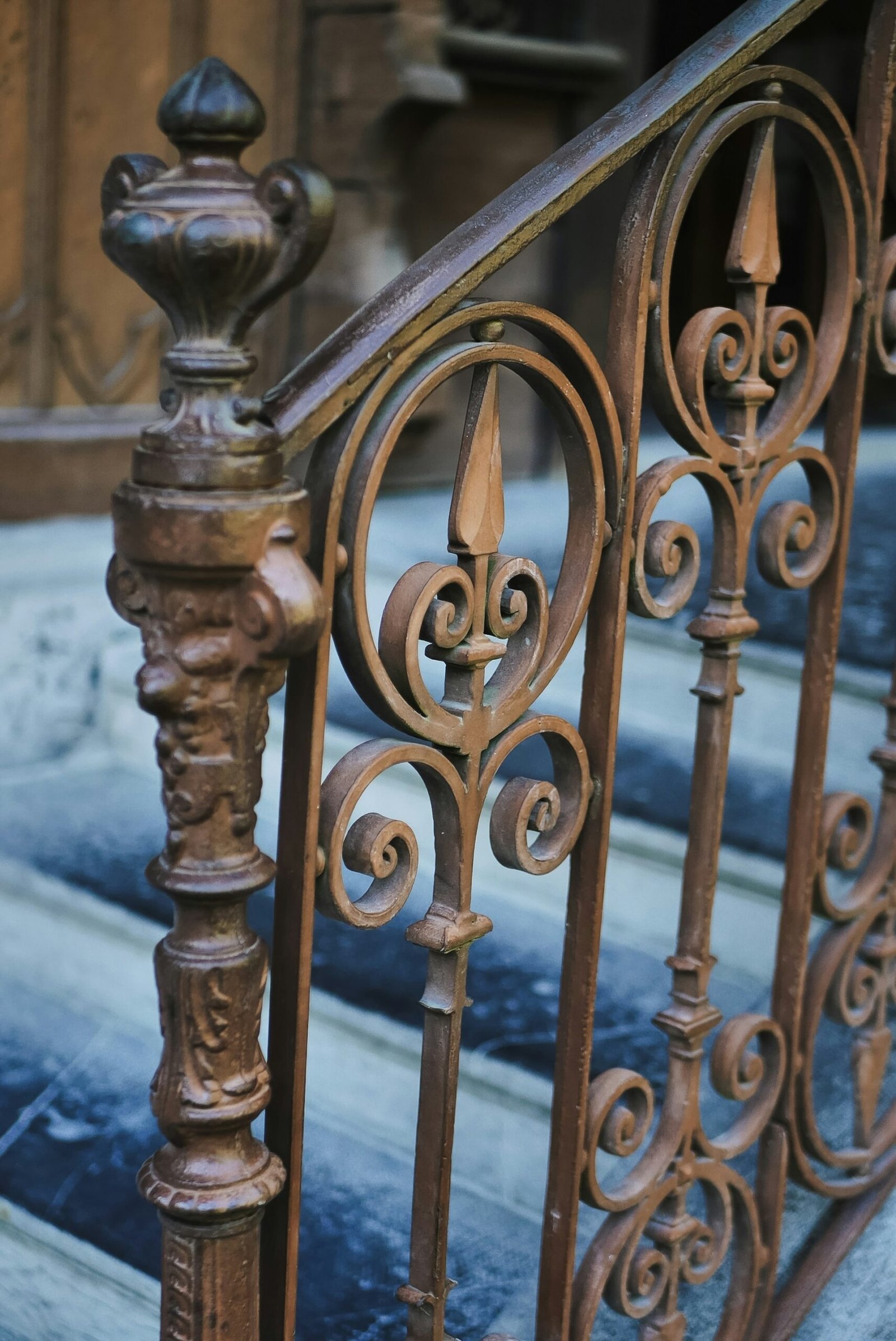Introduction:
In the world of architectural design and landscaping, few elements evoke the timeless charm and sophistication quite like wrought iron and wood gates. These exquisite pieces not only serve as functional barriers but also stand as stunning focal points, adding character and elegance to any property they adorn. With a rich history dating back centuries, the combination of wrought iron and wood continues to captivate homeowners, designers, and admirers alike. In this article, we delve into the allure, craftsmanship, and enduring appeal of wrought iron and wood gates.
A Brief History:

The craftsmanship of wrought iron dates back to ancient civilizations, where skilled artisans meticulously forged iron into intricate patterns and designs. Its versatility and durability made it a favored material for creating gates, fences, and other architectural elements. Meanwhile, wood has been utilized for centuries in construction and design, valued for its natural beauty and versatility.
The marriage of wrought iron and wood in gate design gained prominence during the Renaissance period in Europe, where elaborate gates adorned the entrances of grand estates and palaces. These gates not only served as functional barriers but also showcased the wealth and status of their owners. Over the centuries, this aesthetic combination evolved, blending traditional craftsmanship with modern design sensibilities.
Craftsmanship and Design:
One of the defining characteristics of wrought iron and wood gates is the level of craftsmanship involved in their creation. Skilled artisans employ traditional techniques alongside modern methods to craft gates that are both visually stunning and structurally sound.
Wrought iron provides endless possibilities for intricate designs, from graceful scrolls and arabesques to geometric patterns and floral motifs.
Complementing the elegance of wrought iron is the warmth and natural beauty of wood. Various types of wood, such as cedar, redwood, and mahogany, are chosen for their durability and aesthetic qualities. The wood is carefully selected, treated, and crafted to enhance its natural grain and texture, creating a striking contrast against the iron elements.
The fusion of wrought iron and wood allows for endless customization options, from classic designs reminiscent of European estates to modern interpretations that blend seamlessly with contemporary architecture. Whether adorned with intricate scrollwork or featuring clean lines and minimalist accents, each gate is a unique work of art that reflects the style and personality of its owner.
Functionality and Security:

Beyond their aesthetic appeal, wrought iron and wood gates serve practical purposes, providing security, privacy, and defining boundaries. The robustness of wrought iron ensures that gates can withstand external elements and provide reliable security for properties of all sizes.
Wood, on the other hand, offers natural privacy and acoustic insulation, making it an ideal choice for gates in residential settings.
Moreover, the combination of wrought iron and wood allows for the integration of modern technology, such as automated gate systems with remote access control and security features. These innovations enhance convenience and safety while preserving the timeless elegance of wrought iron and wood gates.
Enhancing Curb Appeal:
The installation of wrought iron and wood gates instantly elevates the curb appeal of any property, creating a lasting impression on visitors and passersby. The grandeur of these gates adds a touch of luxury and sophistication, enhancing the overall aesthetic value of the property.
Whether serving as an entry gate to a driveway, garden, or courtyard, or as a decorative accent within a fence line, these gates enhance the visual appeal of any outdoor space.
Maintenance and Care:

While wrought iron and wood gates exude timeless elegance, they require proper maintenance to preserve their beauty and functionality. Regular inspection, cleaning, and maintenance are essential to prevent rust, corrosion, and deterioration of both iron and wood components.
For wrought iron gates, applying a protective coating such as paint or powder coating helps prevent rust and corrosion caused by exposure to moisture and environmental factors. Periodic inspections for signs of wear or damage, such as loose joints or rust spots, allow for timely repairs and maintenance.
Similarly, wood gates require routine care to protect against weathering, insect damage, and rot. Applying a sealant or protective finish helps maintain the wood’s natural beauty and prolong its lifespan. Additionally, regular inspections for signs of warping, cracking, or decay enable prompt repairs to prevent further damage.
Conclusion:
Wrought iron and wood gates represent more than just functional barriers; they embody the timeless elegance, craftsmanship, and sophistication of centuries-old traditions. From their rich history to their enduring appeal, these gates continue to captivate and inspire homeowners, designers, and admirers around the world.
As symbols of luxury and refinement, wrought iron and wood gates enhance the aesthetic value of any property while providing practical benefits such as security, privacy, and defining boundaries. With their exquisite craftsmanship, versatility, and ability to complement any architectural style, these gates remain an iconic element of timeless beauty in the realm of architectural design and landscaping.




